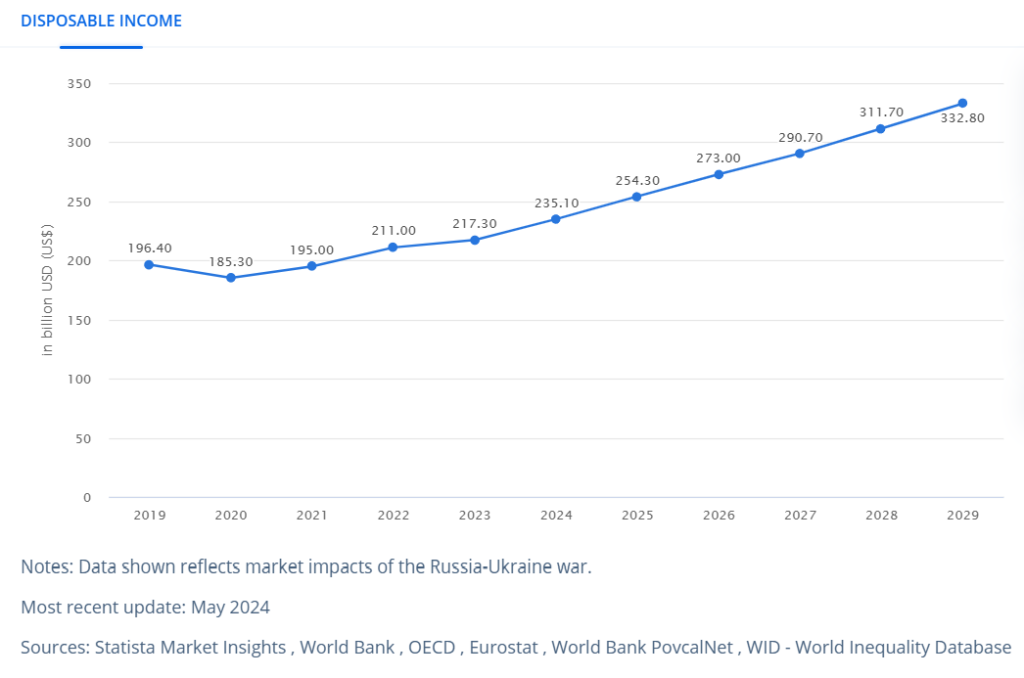Understanding Emerging Consumer Trends in Malaysia
Malaysia, well known for its rich cultural heritage and lush tropical landscape juxtaposed with modern bustling cities, stands as an economic powerhouse in Southeast Asia. With a population of 34.49 million in January 2024, a life expectancy at birth of 74.88 years, and a fertility rate of 1.8, Malaysia’s demographic landscape is integral to understanding emerging consumer trends Malaysia is experiencing.Emerging Consumer Behavior Patterns
The modern Malaysian consumer is characterized by a growing preference for convenience, quality, and personalized experiences. The rise of e-commerce has reshaped shopping habits, with online platforms becoming a primary shopping destination for many. According to recent studies, online retail sales in Malaysia are projected to continue their upward trajectory, driven by the increasing internet penetration and smartphone usage. Moreover, there’s a noticeable shift towards health-conscious living. Consumers are more inclined to purchase organic and sustainable products, reflecting a broader global trend. This shift presents opportunities for businesses to cater to the demand for healthier and environmentally-friendly options.
Key Demographic Shifts
Malaysia’s demographic landscape is also undergoing significant changes. According to recent research, Malaysia’s population grew by 367,000 (+1.1 percent) between early 2023 and the beginning of 2024, reaching 34.49 million. This population is made up of 48.9 percent women and 51.1 percent men. Furthermore, 78.9 percent of Malaysia’s population now lives in cities, with 21.1 percent living in rural areas. The country boasts a young population, with a median age of around 30 years. This youthful demographic is tech-savvy, value-driven, and influential in shaping market trends. The millennial and Gen Z cohorts are particularly notable for their digital-first approach, favoring online interactions and transactions over traditional methods. Additionally, the urbanization rate in Malaysia is increasing, with more people moving to cities in search of better opportunities. This urban migration is contributing to the growth of urban markets, creating new avenues for businesses to explore. The rise of the middle class is another critical factor, as higher disposable incomes translate to greater purchasing power and demand for diverse products and services.Digital Adoption Rates
Digital adoption in Malaysia is accelerating at an unprecedented pace. At the start of 2024, there were 33.59 million internet users in Malaysia, representing an internet penetration rate of 97.4 percent of the total population. This indicates a substantial digital presence, with only 2.6 percent of the population, or approximately 897.3 thousand people, remaining offline. Between January 2023 and January 2024, the number of internet users in Malaysia increased by 357 thousand, marking a growth rate of 1.1 percent. This surge in internet users highlights the country’s robust digital infrastructure and the increasing reliance on online services. Mobile commerce is also on the rise, with consumers increasingly using their smartphones for shopping, banking, and entertainment. This shift towards mobile-centric behavior underscores the importance for businesses to optimize their digital presence and ensure mobile-friendly interfaces. The government’s initiatives to promote digital transformation, such as the Malaysia Digital Economy Blueprint, are also playing a pivotal role. These efforts aim to enhance the country’s digital infrastructure and create a conducive environment for tech-driven growth.Implications for Businesses
Understanding these consumer trends Malaysia is experiencing is essential for businesses to remain competitive and relevant. Companies need to adopt a customer-centric approach, leveraging data analytics to gain insights into consumer preferences and behaviors. Personalization will be key, as consumers increasingly expect tailored experiences that resonate with their individual needs and lifestyles. Furthermore, businesses should invest in digital capabilities, enhancing their online presence and ensuring seamless customer journeys across digital touchpoints. E-commerce platforms, social media engagement, and mobile optimization should be at the forefront of their strategies. Sustainability is another critical area. With the growing demand for eco-friendly products, businesses can differentiate themselves by adopting sustainable practices and offering green alternatives. In 2024, the household disposable income in Malaysia is forecast to amount to US$235.10 billion, reflecting the increasing purchasing power and economic stability. This significant disposable income indicates a robust consumer market ready for diverse offerings. In conclusion, the emerging consumer trends Malaysia is witnessing, driven by demographic shifts and digital adoption, present both challenges and opportunities for businesses. By staying attuned to these trends and adapting accordingly, companies can unlock new growth avenues and build lasting relationships with their customers.
In conclusion, the emerging consumer trends Malaysia is witnessing, driven by demographic shifts and digital adoption, present both challenges and opportunities for businesses. By staying attuned to these trends and adapting accordingly, companies can unlock new growth avenues and build lasting relationships with their customers. 
